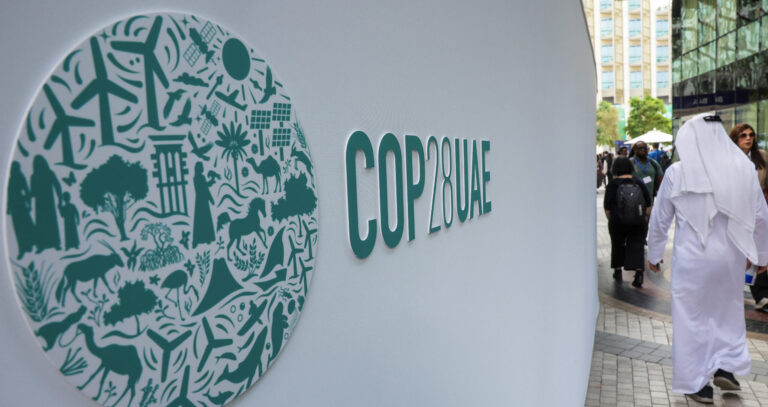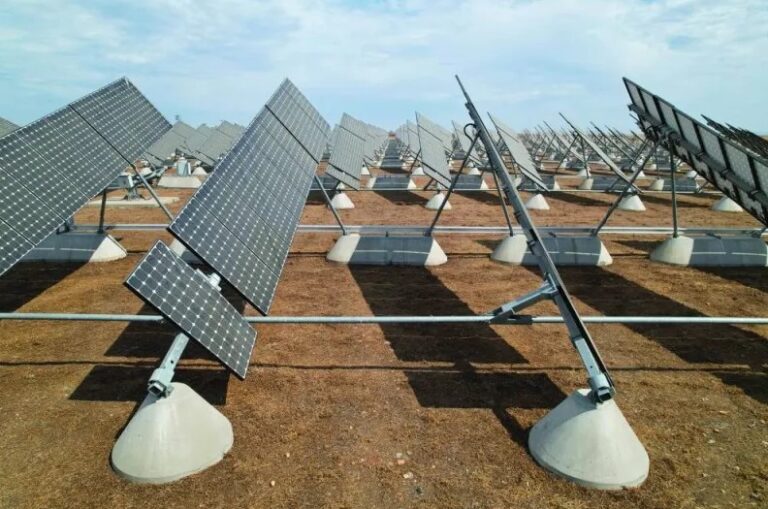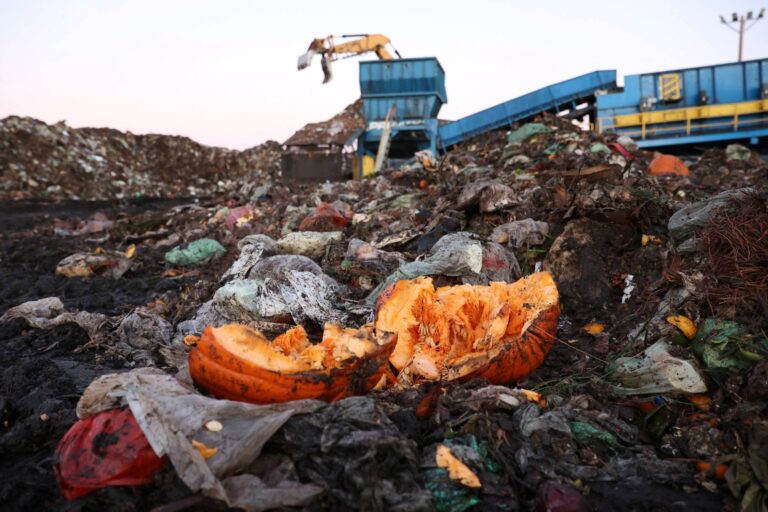UN climate chief calls for $2.4tn inclimate finance

The world needs to mobilise at least $2.4tn to keep global climate change goalswithin reach, the United Nations climate chief said in a speech yesterday.
Simon Stiell, executive secretary of the UN Framework Convention on ClimateChange (UNFCCC), addressed a group of students at the Azerbaijan DiplomaticAcademy in Baku, host of the COP29 climate summit in November, laying out thesteps that need to be taken this year to turn the commitments made at last year’ssummit in Dubai into reality.
This was Stiell’s first major speech since the UN gathering in Dubai, where nearly200 countries agreed to begin a transition away from fossil fuels to avert the worstimpacts of climate change.
“It’s clear that to achieve this transition, we need money, and lots of it – $2.4tn, ifnot more”, excluding China, Stiell said in prepared remarks, citing a reportreleased in December from the High-Level Expert Group on Climate Finance.
“Whether on slashing emissions or building climate resilience, it’s alreadyblazingly obvious that finance is the make-or-break factor in the world’s climatefight – in quantity, quality, and innovation,” he said. “In fact, without far morefinance, 2023’s climate wins will quickly fizzle away into more empty promises.”
Climate finance will be the main focus of the Azerbaijan-hosted talks, wheregovernments will be tasked with setting a new target post-2025 for raising moneyto support developing country efforts to cut emissions and adapt to the worseningimpacts of climate change.
Setting a new financial goal will be challenging given that countries only met lastyear a goal set in 2009 to mobilise $100bn a year in climate finance by 2020.
“It’s already blazingly obvious that finance is the make-or-break factor in theworld’s climate fight,” he said, adding that without more finance, the winsachieved at the COP28 Dubai summit will fizzle out.
Stiell said that the year should be spent ensuring that the global financial systemand multilateral banks can meet the task of ramping up climate finance, and urgedbanks to triple the amount of climate grants and concessional finance by 2030and triple the rate of private capital they mobilise.
More broadly, he cautioned against taking “victory laps” after the UAE agreement,saying that the political agreement reached in Dubai enables countries to hidebehind “loopholes”.
“The action we take in the next two years will shape how much climate-drivendestruction we can avoid over the next two decades, and far beyond,” he said.
The world is currently far off track in delivering on its cornerstone climate deal,agreed in Paris in 2015.
Under the Paris Agreement, world leaders pledged to keep the rise in Earth’saverage temperature to “well below” 2.0° Celsius above the pre-industrial leveland preferably the much safer threshold of 1.5C.
The 2020s are critical for keeping that 1.5C target in view, with UN climate expertsestimating that planet-heating greenhouse gas emissions need to be slashed bysome 43% by 2030.
There is progress, with a surge in clean energy technologies like solar, wind andbatteries, as well as electric vehicles.
However, emissions continue to rise.
A key challenge that is likely to take centre stage at this year’s climate talks inBaku, as well as meetings of the World Bank and International Monetary Fund(IMF), is how to support emerging economies manage and pay for their transitionto clean energy.
Many of these nations are currently mired in debt and facing a raft of challenges,from inflation to growing climate impacts.
Meanwhile global warming continues, with 2023 confirmed as the hottest everrecorded and experts warning 2024 could be even hotter.
The Earth is now about 1.2C warmer than it was in the 1800s.
This is already having an accelerating impact on people and ecosystems acrossthe planet, from heatwaves and droughts, to devastating floods and storms.
A damning appraisal of countries’ decarbonisation efforts so far, released lastyear, showed the world heading for catastrophic planetary heating.
Stiell conceded it would take an “Olympian effort” to get the world on track.
One key task for countries will be to outline a new round of national climatetargets for 2035 ahead of a pivotal COP30 meeting, due to be held in Brazil in2025.
These pledges should be strengthened to align with the 1.5C goal, cover thewhole economy and all greenhouse gases, Stiell said.
“The action we take in the next two years will shape how much climate-drivendestruction we can avoid over the next two decades, and far beyond,” he added.









NEW HAVEN – Now that the falsehoods and obfuscation of climate denialism have finally been silenced, addressing climate change has become the world’s top priority. But time is running out, and the International Monetary Fund warns that any further delays on implementing policies to mitigate global warming will only add to the economic cost of the transition to a low-emissions economy. Worse, we still lack a concrete, pragmatic strategy for tackling the problem. Although economists have made a robust case for why carbon taxes are the best solution, this option has proven politically infeasible, at least in those countries that account for some of the highest emissions (namely, the United States).
Commentators have also stressed that climate change is a shared problem involving important cross-border externalities that must be addressed through a multilateral approach to global coordination. But, as with carbon taxes, this argument has fallen on deaf ears. And, given the current geopolitical climate and the increasing fragmentation of the global economy, there is little hope that the message will get through anytime soon.
Having committed to assisting developing economies as they confront climate change, the World Bank finds itself limited by the country-based model underlying its financing operations. It is earnestly weighing its options and considering how it could coordinate climate-related financing across borders. But while such efforts are well meaning and consistent with the spirit of multilateralism, they inevitably will delay concrete action. World Bank financing would have to be completely restructured, and coordinating action across multiple countries that have limited financial resources and often conflicting interests seems an impossible task. For example, while some developing economies are rich in fossil fuels, others are starved for energy sources.
Given these limitations, pragmatism dictates focusing on the biggest polluters. Global carbon dioxide emissions are concentrated among only a handful of countries and regions. China, the US, the European Union, Japan, and Russia collectively account for 63% of the total, and none of these top polluters is a low-income country anymore. China, the poorest of the group, represents around 30% of all emissions, making it by far the world’s largest current polluter in absolute terms. But its government is taking steps to accelerate the transition to green energy – a winning strategy, given the country’s abundance of rare earth metals.
India, the third-largest emitter, currently accounts for approximately 7% of global CO2 emissions, and its size and growth trajectory imply that it could easily surpass China as the leading polluter, barring stronger climate policies. In fact, when it comes to helping developing countries decarbonize, considerable progress could be made simply by targeting India alone. The big advantage of this strategy is that it would avoid the paralysis associated with attempts to adopt a multilateral approach in an increasingly fragmented world.
This does not mean that we should eschew projects aimed at climate mitigation or adaptation in other countries. But we would not need to wait until everyone is on board before doing anything. Those insisting on a multilateral approach should learn from the experience of the ultimate multilateral institution: the World Trade Organization. Its requirement that every single provision in every multilateral agreement gain unanimous support has left it increasingly paralyzed, prompting demands for institutional reform.
Of course, India is not low-hanging fruit. It is rich in coal and has little incentive (beyond the health of its citizens) to hasten the transition to green energy. In focusing on India, we would need to employ the carrot, not the stick.
Since the stick generally takes the form of pressure to implement carbon taxation, it is a non-starter. A tax would be ineffective, because it would incite massive domestic opposition (as has been the case in the US). It would also be morally objectionable, because it is unfair to ask a lower-middle-income country to bear the burden of reducing CO2 emissions when rich countries (like the US) have failed to do the same. Moreover, even if China and India are now two of the world’s biggest polluters, they bear little responsibility for the past, cumulative emissions that led to the current climate crisis.
That leaves the carrot, which would come in the form of tax incentives or subsidies to support green energy. When paired with other policies, these can ease firms into adapting to higher environmental standards (such as those associated with a cap-and-trade program). But such policies are expensive, which means that tackling climate change will require richer countries to help finance them. Whether or not India becomes the new China, it is still in our power to ensure that it does not become the new outsize polluter.
https://www.project-syndicate.org/commentary/climate-change-prioritize-top-emitters-over-multilateralism-by-pinelopi-koujianou-goldberg-2023-05